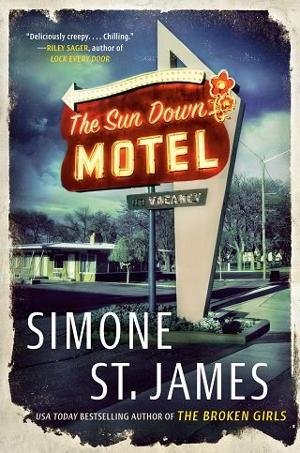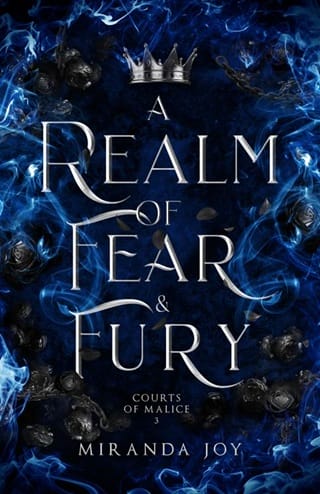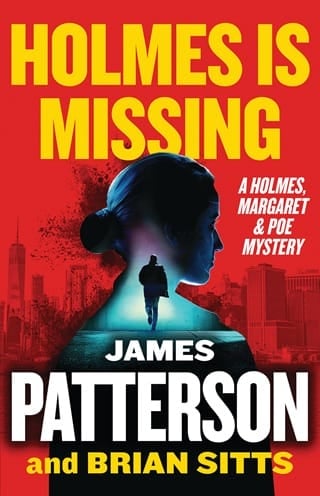Carly
Fell, New York
November 2017
CARLY
The Internet was a gold mine of information on Cathy Caldwell. Whereas I’d spent months subsisting on the few paragraphs I could find about my aunt Viv, Cathy Caldwell was a whole different ball game. Cathy Caldwell was famous.
She hadn’t always been famous. My first search for her name brought up a list of articles from the last few years—true-crime blogs, a podcast, and a Reddit thread with dozens of posts. Google showed me a photo, a 1970s color snapshot of a pretty woman with sandy brown hair standing in a sunlit back yard somewhere, smiling with a small baby on her hip. She was wearing short shorts and a turquoise halter top, her face a little blurry the way old snapshots always are from the days of film cameras with manual focus. The picture looked like the kind that was stuck in those old photo albums with plastic film that you smoothed over each page.
“I can’t believe you didn’t tell me about Cathy Caldwell,” I said to Heather as I sat glued to my laptop after we got back from talking to Jenny Summers.
I was half joking, but Heather answered me seriously. “I told you we have a lot of dead girls in Fell.”
“You weren’t kidding. What was the other name she said? Victoria something?”
“Lee.” Heather was standing in the kitchen, like she’d gone in there for something and then forgot what it was. She zipped the collar of her zip-up hoodie all the way up her neck, as if she was cold. She looked blankly at the closed door of the fridge. “That one was solved, and then it wasn’t.”
I frowned at her, though she wasn’t looking at me. “What does that mean?”
“Her boyfriend was convicted, and then it was overturned a few years later. He was proven innocent.”
“Truly?” I opened a new tab and started a new search. “That’s incredible.”
Heather turned and looked at me, her face still set in serious lines. “I can’t talk about this anymore.”
I took my hands from my laptop keys. “What?”
“The dead girls. I spent too much time reading about them a few years ago. It put me in a bad place. I’m not supposed to read about them anymore, you know?”
“Depression?” I asked her. “Anxiety?”
“A mix.” She shrugged. “They go together. They bring the insomnia. And the bike accident I had—there was trauma from that.” She glanced down at her zipped-up hoodie. “I have other issues, too, I think you may have guessed. My therapist says I have to work through it, but I can’t get . . . fixated on negative things.” She glanced at me. “I guess I’m not as much help as I thought I was. Sorry.”
“No, I’m sorry,” I said. “I showed up in your life and brought my problems. It’s my fault.”
She rolled her eyes and waved her hand. “It’s fine. Just do the searches yourself. I’m going to go study. Maybe have a nap.” She walked toward her bedroom, still hunched into her sweatshirt. It was so big, and she was so small, that she looked like a young girl in it. She got to her bedroom doorway, then put her hand on the frame and looked back at me over her shoulder. “Look up Betty Graham,” she said. “And when you’re done, help yourself to my meds.” Then she went into the room and closed the door behind her.
• • •Cathy Caldwell. Young, married, mother of a baby, her husband deployed. Left work one day and never came home; her body was found under an overpass, dead of stab wounds to the neck.
It happened in 1980. There was a sensation in the local newspapers for a while, and then, with the case ice-cold, the attention dropped off. Within a few years Cathy was forgotten—until a popular true-crime podcast revived the story in 2016. Then there was a rash of attention again, a new generation of amateur sleuths trying to put the pieces of the puzzle together. Cathy’s baby son, now grown, did interviews, supplied photos. He talked about the unique pain of growing up knowing a monster had murdered your mother, knowing that whoever that monster was, he was still walking free.
But for all the Internet’s attention, the case was still unsolved. There was DNA but no match in any system. There was nothing else to go back to, no other leads that new technology could magically exploit. Memories were rusty. A growing number of people, like Cathy’s husband, were now dead. The only paper-thin theory, backed by zero proof, was that the husband hired someone to do it for the life insurance money. Otherwise, nothing.
There was less about Victoria Lee. She’d been strangled and dumped off a jogging trail in 1981, and her boyfriend was quickly arrested and convicted of the crime. Unlike the lengthy odes to pretty, sweet Cathy, there was no one to talk about how wonderful Victoria was. Instead there was a cropped, blurry photo of her face, obviously chopped from a group picture, and the caption Murder victim Victoria Lee. Cathy was a wife, a mother, beloved and kind and innocent. Victoria was just a murder victim.
In 1988 Victoria’s boyfriend got a new legal team and won a second trial, based on a technicality in the first trial. In the new trial it came out that Victoria had been wearing a thin gold chain around her neck when she was strangled. The chain had been buried in the flesh of her neck, and whoever strangled her would have had marks on his hands. Victoria’s boyfriend had no marks on his hands. His conviction was overturned and he was set free.
Which meant that Victoria’s murder, initially solved, was unsolved again.
I didn’t know why I was reading this. I didn’t know what it had to do with my aunt Viv. But I couldn’t stop.
Betty Graham was next. She had been murdered in 1978 and dumped on a construction site. Betty was a schoolteacher with no husband and no kids, and she’d kept to herself. A neighbor had seen a traveling salesman knock on Betty’s door and get let in. No one saw her alive again.
Betty had had her own small Internet revival, though not as big as Cathy’s. A few armchair sleuths had written about her, including a well-researched long-form article on a true-crime website. The details of the murder were scarce, but they made me go cold.
Betty had fought.
It wasn’t released at the time, but the article’s author had dug it out of the coroner’s report decades later. Betty’s body had bruises on the arms, the back, the shoulders. Her fingernails were torn and bloody. Her knees were swollen and damaged. There were scrapes on her leg and her hip, as if she’d been dragged. Her knuckles were bloody—her own blood—and four of her fingers were broken. She was missing two teeth. The coroner posited that she had been put somewhere, likely the trunk of a car, and had fought the whole way in. Then fought to get out. Then fought some more before her killer raped her, then stabbed her five times in the chest and finally killed her.
Then he’d dumped the body on a heap at a construction site—the site of the future Sun Down Motel.
My head went light. The Sun Down. A woman’s body had been dumped at the Sun Down.
I scrolled through the article and found a photo of Betty Graham. She had a conservative haircut and wore a high-necked blouse, but there was no hiding that she was a beautiful woman. She was sitting for a formal portrait photo, likely for the school where she worked, her head tilted at that specific angle they always used in old school photos, her hands folded demurely in front of her, a polite smile on her face. She was beautiful but she was closed off, her eyes and demeanor saying don’t approach. She looked like the kind of woman who could be polite and pleasant to you for years, and decades later you realize you don’t know a single personal thing about her because she’s never told you.
If you looked at her face, you wouldn’t see a woman who would fight and bleed to her dying breath. You saw a woman who would lead a boring spinster existence to the end of her days, not someone who scratched her nails off and crawled on her knees in an effort not to die. You wouldn’t see someone who wanted to live so badly, so desperately that she would do anything.
Then again, maybe you might.
Maybe you saw a woman who hated dying so much that she refused to do it all the way. Maybe you saw the woman in the flowered dress at the Sun Down Motel. Because I had. It was definitely her.
And if I had seen Betty, then it was possible Viv had seen her, too.
Five minutes later I was in the bathroom, sweating and gripping the counter with icy hands, hoping I wouldn’t faint.
We had a conversation about Cathy Caldwell a few weeks before Viv died.
The woman in the flowered dress, looking down at me from the upstairs level.
Betty Graham, fighting and dying and getting dumped in the place where I now worked. Where Viv had worked.
We were single girls who worked at night. Do you think we didn’t know the dangers, even back then?
Cathy fucking Caldwell. How could I be so stupid?
I bent over the sink and turned the cold water on. I put my hand under it, meaning to splash it on my face, but I couldn’t quite do it. I just stood there, staring down at the water going down the drain.
This was the connection. It had to be. Viv had known about Cathy Caldwell in 1982—she had had a conversation about her with her roommate. If Viv knew about Cathy, it was entirely possible she knew about Betty Graham. Especially since Betty’s body was dumped at the Sun Down construction site. It was one of those things you’d hear about when you’d worked in a place for a while.
If the woman in the flowered dress was Betty—and she was—then Viv had seen her. Known who she was. She could have figured it out, just like I did.
And it had something to do with her disappearance. It had to.
I spent too much time reading about dead girls a few years ago. It put me in a bad place.
Viv was sad. And she was also sort of angry, especially toward the end.
Viv had been out a lot at the end. Out pursuing something that wasn’t a man. Something that made her angry.
The water still running, I raised my gaze to the shelf next to the medicine cabinet. I took in Heather’s line of medications, arranged just so.
Betty, Cathy, Victoria. They were dark things, and following them led to a dark place. I could see it so easily, how you could walk through that door and never come out. How reading about the dead girls would lead to thinking about them all the time, to obsessing about them. Because after all this time, after decades and overturned convictions and reams of Internet speculation, no one knew who freaking killed them. No one at all.
If I was going to solve this, I was going to have to go through the door.
So I went.
 Fullepub
Fullepub 



